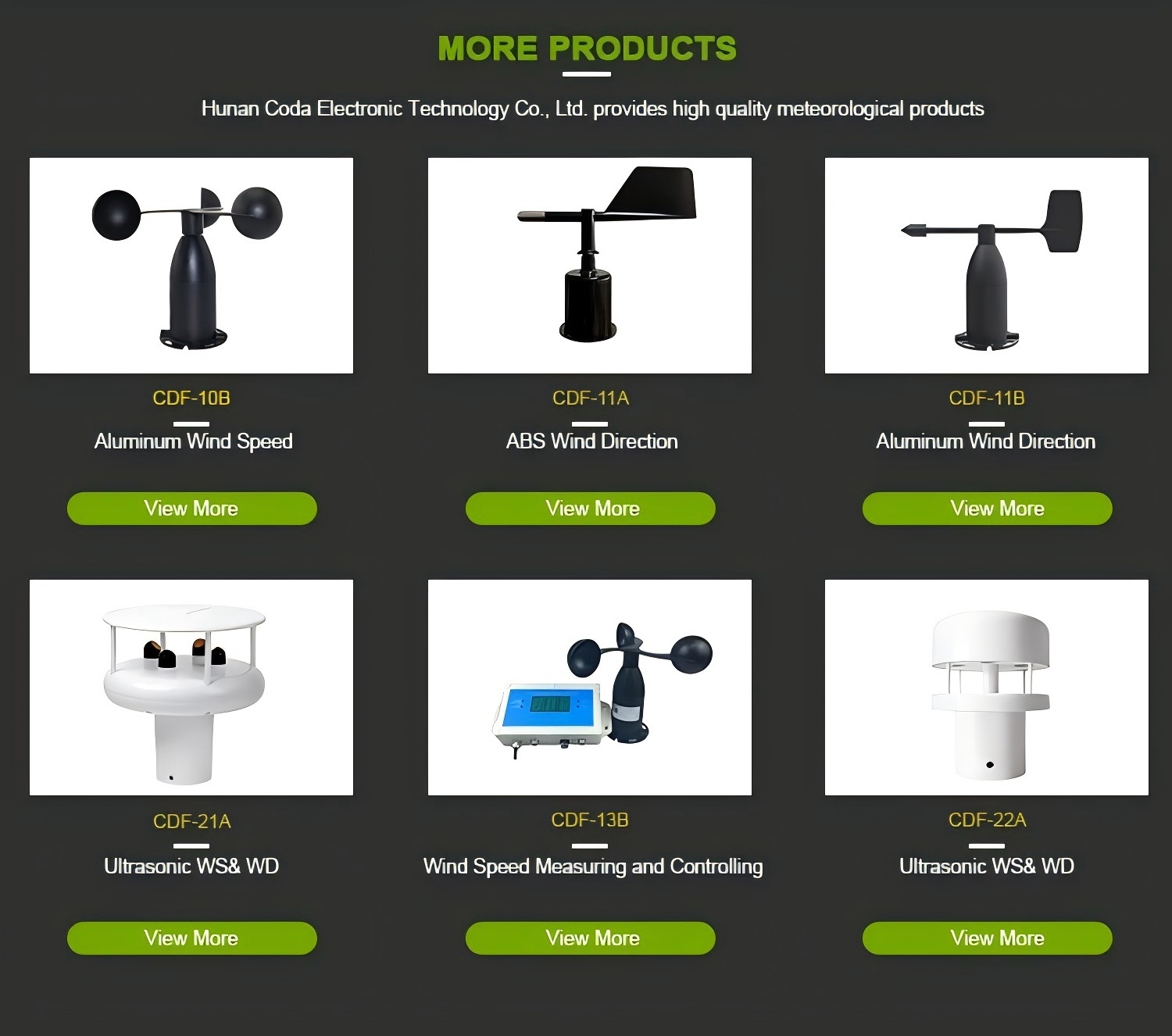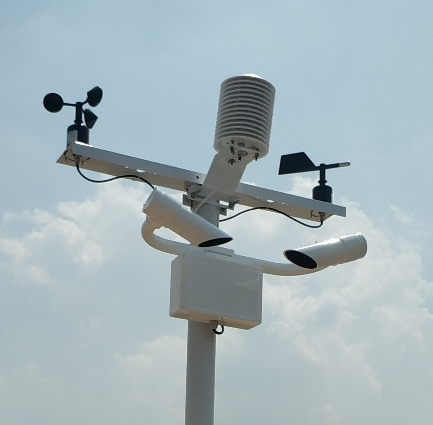Accurate weather monitoring is crucial for a variety of industries, including agriculture, energy, construction, and environmental research. Among the essential tools for measuring environmental conditions are anemometers and automatic weather stations. These devices provide valuable data on wind speed, temperature, humidity, barometric pressure, and other weather parameters.
In this article, we will look at why wind sensors and automatic weather stations are important. We will discuss their benefits and why they are essential for accurate weather assessment.
An wind sensor is a device used to measure wind speed and, in some cases, wind direction. Wind speed is important for understanding weather patterns. It helps us assess potential hazards and improve energy production in wind power. Various wind sensor types are available, such as:
Cup anemometers: These have cups that rotate in the wind, and the speed of rotation is used to calculate wind speed.
Vane wind sensors: These use a vane to measure wind direction and speed.
Hot-wire wind sensors:
These instruments are highly precise. They determine the amount of heat dissipated as air flows across a heated wire. This gives precise data on wind speed.
Experts widely use wind sensors in fields such as meteorology, aviation, marine navigation, and construction. These devices are important for tracking daily weather and checking wind hazards. They help collect accurate, real-time wind data.

An automatic weather station (AWS) functions as an intelligent device. It collects and records weather data on its own. This data includes temperature, humidity, wind speed (measured by an wind sensor), barometric pressure, solar radiation, and rainfall. These stations provide real-time weather data, often transmitted to a central system for analyzing and reporting.
Unlike traditional weather stations, which require manual data collection and maintenance, automatic weather stations operate autonomously, reducing human error and increasing efficiency. AWSs are equipped with sensors that provide accurate, continuous readings. Some advanced AWS models connect with IoT platforms. This lets users monitor weather data from anywhere.
Both wind sensors and automatic weather stations offer highly accurate and reliable data. Wind sensors measure wind speed with precision, ensuring accurate weather assessment. AWS systems provide ongoing and real-time data on different weather factors. This helps businesses and researchers make better decisions.
Accurate weather data is crucial for industries such as agriculture, energy, construction, and aviation. Wind sensors help wind farms produce more energy by measuring wind speed.
AWS systems help farmers check conditions for irrigation and crop management. In construction, real-time weather data from AWS can keep workers safe. It provides forecasts for wind speed, temperature, and rain.
A key benefit of an automatic weather station is its capability to function independently. You can set up these stations in remote locations and program them to collect data at specific intervals.
For example, AWS systems can send real-time data to a cloud platform. This allows remote monitoring from any device that connects to the internet. This is particularly useful for businesses with multiple locations or for remote environmental research.
An anemometer is a low-cost tool for measuring wind speed. When combined with an automatic weather station, it provides a better and more affordable way to monitor the weather. Instead of purchasing multiple standalone devices, an AWS consolidates multiple weather sensors into one system, offering a more affordable and space-efficient solution.
Both wind sensors and automatic weather stations play a vital role in safety management. By providing real-time data on weather conditions, these tools help prevent accidents, particularly in hazardous environments.
Wind speed data from an wind sensor is important for checking the safety of outdoor activities. This includes construction projects and marine operations. AWS systems also monitor severe weather conditions, providing early warnings to mitigate potential risks.
Agriculture: Monitoring wind speed, temperature, and humidity helps optimize irrigation systems and protect crops from adverse weather.
Energy: Wind energy companies rely on wind sensors to assess wind patterns and optimize energy production in wind farms.
Construction: Ensuring worker safety by tracking weather conditions, especially wind speeds, which can affect construction site safety.
Research: Providing accurate weather data for environmental studies and scientific research projects.
Aviation:
Wind sensors and AWS systems provide real-time data on wind speed and direction, crucial for aviation safety.

For sectors needing detailed meteorological information, an automated weather station equipped with a wind sensor is essential. It allows businesses to monitor real-time data on wind speed, temperature, and other critical parameters without manual intervention. Using an wind sensor in an automatic weather station helps businesses monitor weather effectively. This is useful for wind energy, farming, and environmental studies.
In today’s rapidly changing weather conditions, having access to accurate and real-time data is essential. Wind sensors and automatic weather stations are important tools.
They measure wind speed and other environmental factors. This helps businesses, researchers, and organizations make smart decisions using reliable weather data. Whether you are checking wind conditions for energy or tracking weather for farming, these devices offer accuracy and reliability. They also provide automation for efficient operations.
If you need high-quality wind sensors or automatic weather stations, check out Coda Sensor. They offer reliable and modern weather monitoring solutions.
Coda Sensor provides various customizable weather station choices. It provides accurate, real-time data. This makes it a great choice for businesses and organizations that need reliable weather equipment.
Discover how water level sensors reduce labor co
Learn how CODA Sensor solar radiation and PAR se
Discover how real-time weather station data impr
Contact: Molly
Phone: +86-17775769236
Tel: 86-0731-85117089
Email: molly@codasensor.com
Add: Building S5, Aux Square, Yuelu District, Changsha City, Hunan Province, China
We chat